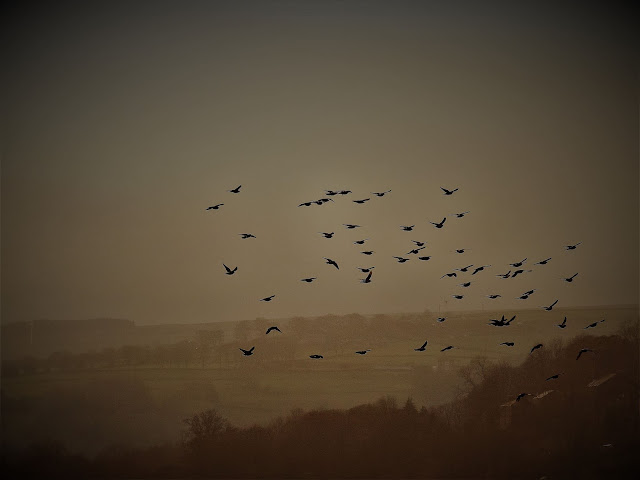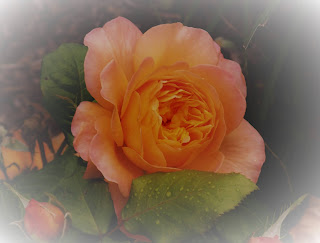Wings Outside the Window
But as the terms of the UK's semi-lockdown begin showing signs of gradual relaxation, I'm thinking back over how, in the last couple of months, there was a gradual increase in the numbers of birds and mammals edging their ways into previously human dominated spaces.
Nearly everyone I know has commented on the longer, louder, seemingly more numerous birdsong heard each morning, while we've all seen or heard of pictures of goats in hotel car parks, monkeys and deer taking over car-less roads in India or South America.
But closer to home, I've noticed this phenomenon on a somewhat smaller scale. Outside Tesco in Sowerby Bridge , West Yorkshire, where the road winds into West Street - usually a bustling conveyor belt of endless traffic - I watched the twitchy snout of a nervous shrew emerging from the hedge, as the animal jutted from cover, scuffling in and out of the undergrowth as if unsure what to make of its newfound territory. Everywhere, as human presences recede to minimal, wildlife is growing bolder, and thus more visible. This surely goes some way to lifting spirits, not only for those fortunate enough to be able to sample nature in the open air, but even for those temporarily shielding entirely behind closed doors.
It would be crass to imply that our current troubles were a "blessing in disguise," or nature a miracle cure for fears over loved ones or the future, but as we pit our collective wits against this virus and its impact, the beauties of spring, whether seen on isolated walks, or through a bedroom window, or heard during the hymn-like dawn chorus, have provided only a positive respite, and in their own ways are signs of hope.
The newly budding trees and spreading greenery have offered consolation beyond my window, twinkled by the glimmering wings of butterflies and glittering in sunshine that has at times made this socially-distanced springtime feel like summer. Working by my window, I've watched chaffinches, bullfinchs, tits, and thrushes, blue-sashed jays, not only more copious, but venturing for longer outside the protective canopies of sycamores and hazel, robins bobbing amid the violet locks of lilac, blackbirds - whose song is now so widespread about the trees and gardens as to feel ever-present, and even a green woodpecker, delving through a snowstorm of white blackthorn. These elusive birds are uniquely coloured in their white breasts, slushy green feathers, and red-striped heads, are more usually seen up on the moors or outside farms, yet I saw this jazzy acrobat on the urban outskirts of King Cross, Halifax.
No visitor to Sowerby Bridge can miss the eponymous geese - a plucky white tribe, who usually live on and around the River Ryburn, regularly march the pavements, stopping traffic, and are even known to pop into an open door. More profuse are the Canada Geese, who populate the Rochdale Canal and whose hooting song I hear long into the night. But this spring, the geese have been joined around the margins of town by herons. Often seen patrolling fish-rich waters further down the valley, sweeping over the canal or briefly preening in the Ryburn, below the bridge and many yards from passing traffic and pedestrians, grey herons are currently found on the towpath by the side of Wharf Street, that road that is usually so congested and whose pavements are never empty, but whose sparser traffic currently trundles at a slower pace. I see herons now on every walk to the shops - sauntering throug the waters, idly fishing and quite at ease in proximity to the small numbers of people passing at respectful distances. Recently I overheard the joyous responses of young children, walking with their parents by the canal, on seeing a heron for the very first time.
Like many, I have taken some solace in these trying times with a solitary evening wander, usually along carefully chosen rural routes where the chances of human encounters are virtually zero. Even up on the moor tops or descending the stony slopes outside Norland I've noticed an increase in sparrows flickering from bushes, in dunnocks and swallows, and watched the moorland edges slowly illuminate in jewelled pools of bluebell, cornflower, lady's smock. But nearer to the town's main street, nervouly heading to the supermarket, I've taken quiet routes by the banks of the Calder, fringed by clusters of gleaming wild garlic, and watched the skittering wagtails - shy, rarely still birds whose flitting feet hug the running waters of a stony stream - pin themselves on rocks for much longer than usual, scanning heads, robot-like, as if taking in new vistas.
Some remark that animals and birds are becoming "tamer," but this does not sit right with me. Far from adapting their natural lifestyles to an often subsuming or destructive human world, this spring the world's wildlife has gingerly reclaimed territory, spreading its wings across towns and city roads, reminding us that the planet is a shared eco-system we co-inhabit with a myriad different forms of life. In these times of trouble, whose root causes may well be linked to the mistreatment of animals, our difficulties have at times been eased by the reassuring sights and sounds of wildlife. Our challenge is to reciprocate this favour in the future. For now, I hope that everyone - key workers en-route to hospitals and care homes, people savouring rare snatches of exercise, those travelling to buy food for the vulnerable, or indeed those whose lives are for the moment confined to their own four walls, are able to take comfort in a flurry of colour in the trees, the song of an unexpected bird, or simply on catching the brief quivering of wings outside the window.








Comments
Post a Comment